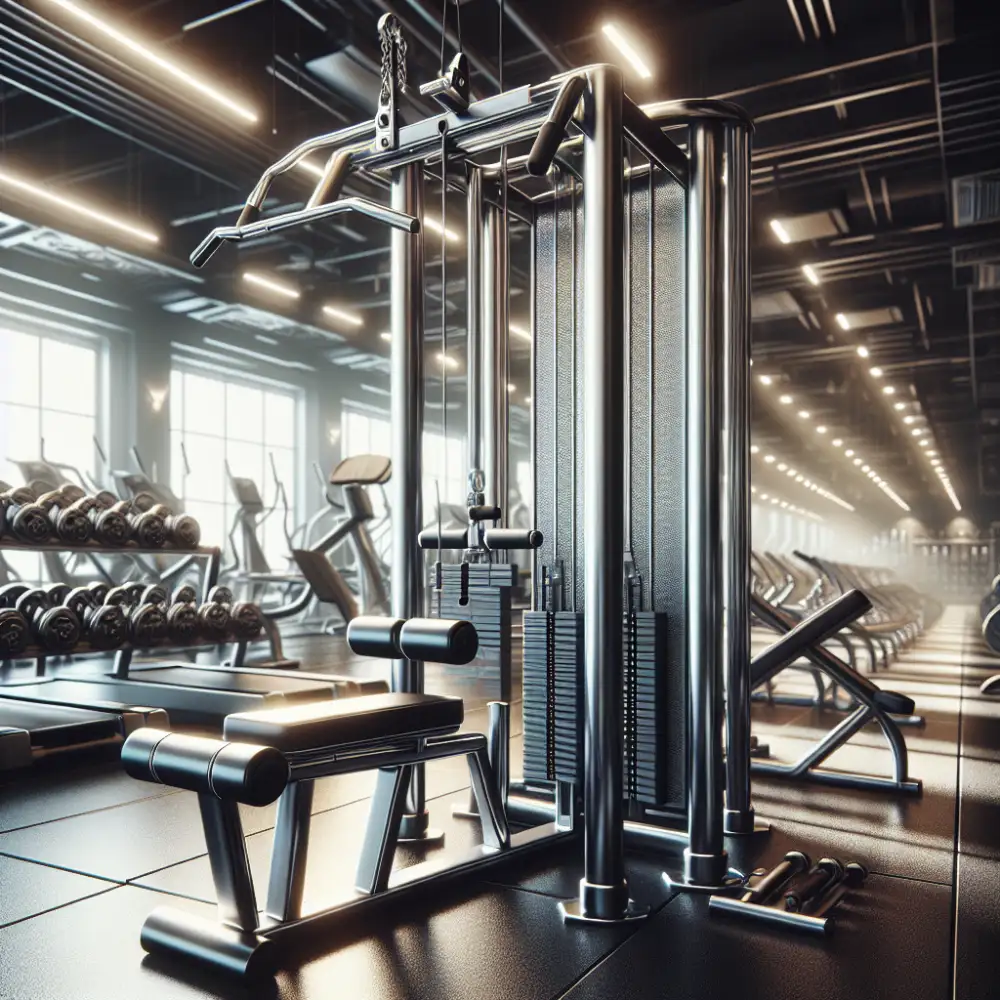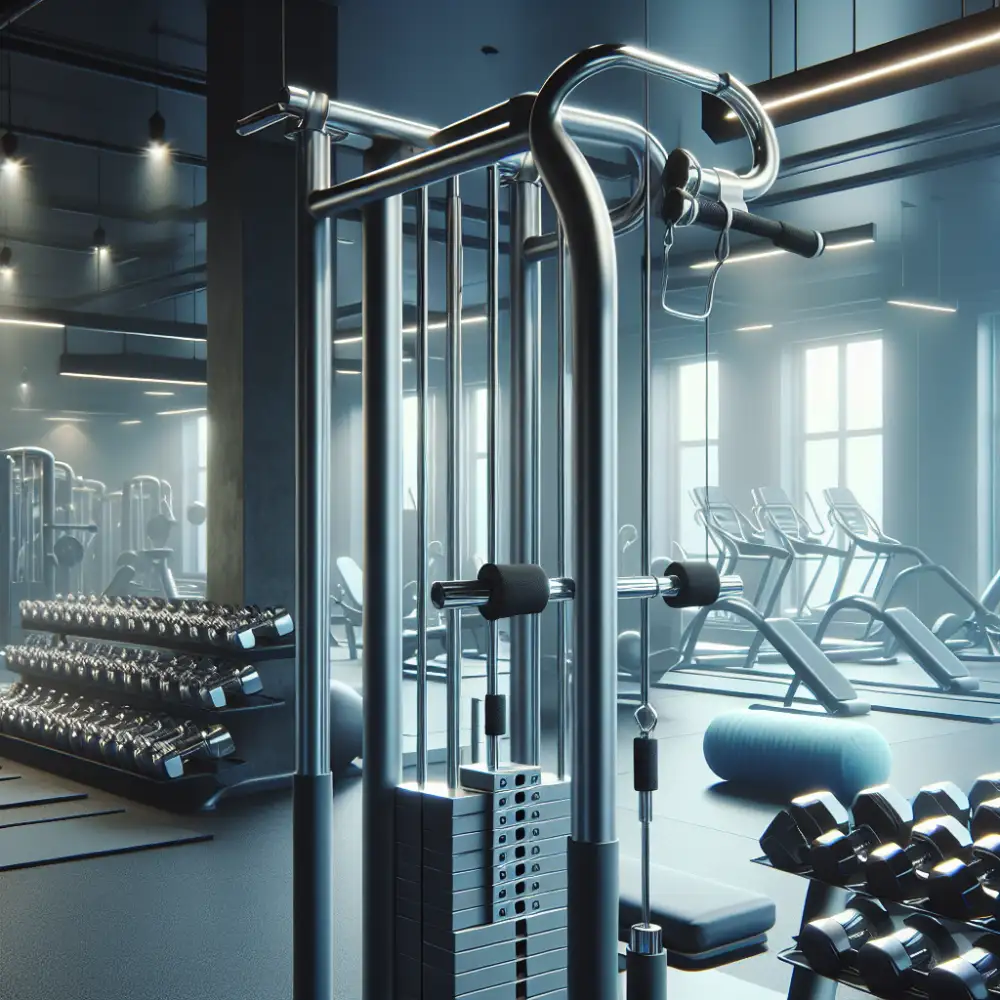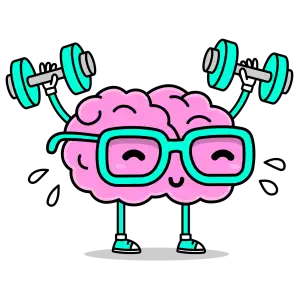Lat Pulldown Bar: Your Ticket to a Stronger Back

What is a lat pulldown bar?
A lat pulldown bar is a piece of gym equipment used for lat pulldown exercises. It typically consists of a long bar attached to a cable machine. The bar is positioned overhead, and the user sits on a bench facing the machine. To perform a lat pulldown, the user grabs the bar with an overhand grip, slightly wider than shoulder-width apart. The user then pulls the bar down to their chest, keeping their back straight and core engaged. Lat pulldowns are a popular exercise for targeting the latissimus dorsi muscles, which are the large muscles in the back that give the back its width. They are also effective for working the biceps, shoulders, and forearms. Lat pulldowns are a versatile exercise that can be performed with a variety of grips and variations. They can be done with a close grip, wide grip, or neutral grip. They can also be performed using a V-bar, a straight bar, or a rope attachment. Lat pulldowns are a great exercise for building strength and muscle mass in the back. They are also a good exercise for improving posture and reducing back pain.
Muscles worked
The lat pulldown primarily targets the latissimus dorsi muscles, the large muscles that span your back from your shoulders to your hips. These muscles are responsible for pulling your arms down and back, such as when you do a pull-up. In addition to the lats, the lat pulldown also works several other muscles in your back, shoulders, and arms, including:
Posterior deltoids: These muscles are located on the back of your shoulders and assist in pulling your arms down and back.
Rhomboids: These muscles are located between your shoulder blades and help to retract your shoulder blades, pulling them towards your spine.
Trapezius: This large muscle group spans your upper back and neck and assists in pulling your shoulder blades down and together.
Biceps brachii: Located on the front of your upper arm, your biceps help to bend your elbows during the lat pulldown.
Brachialis: This muscle lies beneath your biceps and also contributes to elbow flexion.
Forearms: Muscles in your forearms, such as the brachioradialis and flexor carpi ulnaris, are engaged to grip the lat pulldown bar and stabilize your wrists.
By working all of these muscle groups together, the lat pulldown helps to improve your overall upper body strength and posture.
Benefits of lat pulldowns
The lat pulldown is a highly effective exercise that targets the latissimus dorsi muscles, commonly known as the "lats," which are the large muscles in your back that give you that desirable V-shape. This exercise offers numerous benefits for both your physique and overall fitness. Lat pulldowns are excellent for building upper body strength, particularly in the back, shoulders, and arms. By engaging multiple muscle groups simultaneously, this exercise promotes muscle growth and definition. Lat pulldowns can significantly improve your posture. By strengthening your back muscles, lat pulldowns help counteract the effects of prolonged sitting and poor posture, leading to a more upright and aligned body. Strong lats play a crucial role in stabilizing your shoulders, reducing the risk of injuries, especially during overhead activities or weightlifting. Lat pulldowns can enhance your performance in various sports and activities, such as swimming, tennis, and rowing, by improving upper body power and stability. Incorporating lat pulldowns into your workout routine can contribute to a well-rounded and balanced physique, enhancing your overall aesthetic appearance.

Lat pulldown variations
The lat pulldown is a classic back exercise and a staple in many strength training routines. While the standard lat pulldown, using a wide overhand grip, is effective, incorporating variations can target your back muscles from different angles, prevent plateaus, and keep your workouts interesting. Here are some popular lat pulldown variations:
Close-Grip Lat Pulldown: This variation, performed with a narrow, overhand grip, shifts the focus slightly to the lower lats and can also engage the biceps more.
Reverse-Grip Lat Pulldown: By using an underhand grip, you emphasize the biceps and lower lats.
Neutral-Grip Lat Pulldown: Using a neutral grip, often with a V-bar attachment, can be more comfortable for some individuals and effectively targets the lats and biceps.
Single-Arm Lat Pulldown: Performing the exercise one arm at a time allows for a greater range of motion and can help address muscle imbalances.
Behind-the-Neck Lat Pulldown: This variation involves pulling the bar behind your head. However, it can put stress on the shoulder joint and is not suitable for everyone.
Straight-Arm Lat Pulldown: This variation targets the lats and teres major, emphasizing the muscles' role in shoulder extension.
Resistance Band Lat Pulldown: If you don't have access to a lat pulldown machine, resistance bands can provide a convenient and effective alternative.
When performing lat pulldowns, remember to keep your core engaged, maintain a slight arch in your back, and avoid using excessive momentum. Focus on pulling the weight down with your back muscles rather than your arms. Experiment with different grips, rep ranges, and variations to find what works best for you and your fitness goals.
Common mistakes to avoid
Using improper form is a common mistake that can lead to injury and reduced effectiveness. Avoid using excessive weight, as this can put stress on your shoulders and lower back. Instead, choose a weight that allows you to maintain proper form throughout the exercise. Another mistake is pulling the bar down too far behind your head. This can strain your shoulder joints. Aim to bring the bar down to your upper chest or just below your chin. Avoid using momentum to lift the weight. This reduces the engagement of your back muscles and increases the risk of injury. Instead, focus on using a controlled motion, squeezing your shoulder blades together as you pull the bar down. Not keeping your core engaged is another common mistake. Engage your core muscles throughout the exercise to stabilize your body and prevent lower back pain. Finally, many people neglect to control the eccentric portion of the movement (the way up). Instead of letting the bar shoot back up, control the weight as you return to the starting position. This helps to fully engage your back muscles and promotes muscle growth.

How to choose the right bar
Choosing the right lat pulldown bar can make a big difference in your workout. Here are a few things to consider:
| Feature | Standard Lat Pulldown Bar | Close-Grip Lat Pulldown Bar |
|---|---|---|
| Shape | Long, straight bar | Short bar with angled grips |
| Grip Width | Wide (usually over 30 inches) | Narrow (usually under 20 inches) |
| Primary Muscles Targeted | Latissimus dorsi (lats), biceps, rear deltoids | Latissimus dorsi (lats), biceps, rear deltoids (with greater emphasis on lower lats) |
Grip: The most common grip types are close grip, wide grip, and neutral grip. Close grip bars are good for targeting the inner back muscles. Wide grip bars are better for overall back development. Neutral grip bars are the easiest on your wrists and elbows.
Length: Make sure the bar is long enough to accommodate your grip width. If you are using a wide grip, you will need a longer bar.
Weight: Some lat pulldown bars are heavier than others. If you are new to weightlifting, you may want to start with a lighter bar.
Material: Lat pulldown bars are typically made from steel or aluminum. Steel bars are more durable, but aluminum bars are lighter.
Knurling: Knurling is the textured surface on some bars that helps you grip the bar. If you have sweaty hands, you may want to choose a bar with knurling.
Ultimately, the best way to choose a lat pulldown bar is to try out a few different ones and see what feels most comfortable for you.
How to use a lat pulldown bar
Before you hop onto the lat pulldown machine, adjust the seat height so that your knees bend at a comfortable 90-degree angle when your feet are flat on the floor. The thigh pad should fit snugly over your upper thighs, preventing you from being lifted off the seat during the exercise. Grab the lat pulldown bar with an overhand grip, slightly wider than shoulder-width apart. This grip targets your lats more effectively. Sit upright, keeping your chest high and shoulders relaxed. Pull the bar down towards your upper chest, bringing your elbows down and back. Focus on squeezing your shoulder blades together as you pull the bar down. Slowly release the bar back to the starting position, maintaining control and avoiding any jerking motions. Remember to breathe throughout the exercise. Exhale as you pull the bar down and inhale as you release it. Start with a weight that challenges you without compromising your form. As you get stronger, gradually increase the weight. Focus on performing each repetition with proper form and control, rather than rushing through the exercise. Engage your core muscles throughout the exercise to stabilize your body and prevent unnecessary swinging. Avoid using momentum to pull the bar down. The movement should be controlled and deliberate. If you experience any pain or discomfort during the exercise, stop immediately and consult with a qualified fitness professional.


The lat pulldown bar: a simple tool, yet in its descent, it unlocks the potential for a powerful back.
Elias Hawthorne
Lat pulldown alternatives
The lat pulldown is a great exercise, but what happens when the lat pulldown machine is occupied or your gym doesn't have one? Don't worry, plenty of lat pulldown alternatives work your back muscles just as effectively.
Pull-Ups
The pull-up is the king of bodyweight back exercises and a fantastic lat pulldown alternative. Pull-ups require you to lift your entire body weight, leading to significant strength gains. If you're new to pull-ups, start with assisted pull-up machines or resistance bands to build strength.
Chin-Ups
While similar to pull-ups, chin-ups use an underhand grip and emphasize the biceps more. However, they still effectively work your lats, making them a valuable alternative.
Bent-Over Rows
Bent-over rows are excellent for building overall back thickness. With various grips and variations, you can target your lats from different angles. Ensure you maintain a flat back throughout the exercise to avoid injury.
Dumbbell/Barbell Pullovers
Pullovers are a classic exercise that effectively targets the lats, chest, and triceps. Lie perpendicularly on a bench with your upper back supported and lower back slightly arched. Lower the weight behind your head in a controlled motion, feeling a stretch in your lats.

Inverted Rows
Also known as Australian pull-ups, inverted rows are a fantastic bodyweight exercise that can be adjusted to your fitness level. Adjust the angle of your body to increase or decrease the resistance.

Remember, proper form is crucial for any exercise. If you're unsure about proper technique, consult a certified personal trainer for guidance. By incorporating these lat pulldown alternatives into your workout routine, you can effectively target your back muscles and achieve your fitness goals.
Frequently asked questions
What muscles does the lat pulldown work?
The lat pulldown primarily targets the latissimus dorsi muscles ("lats"), the large muscles in your back that give you that V-shape. It also engages other muscles like biceps, shoulders, and forearms.
How do I do a lat pulldown correctly?
Sit facing the machine and grab the bar with an overhand grip, slightly wider than shoulder-width. Keep your back straight and core
Published: 01. 07. 2024
Category: Food



